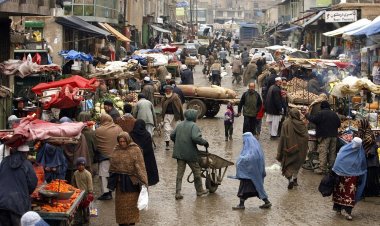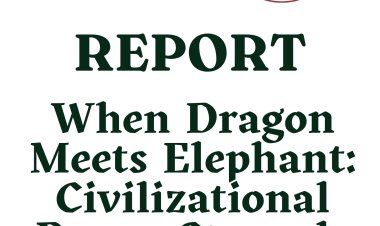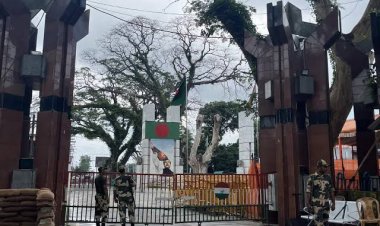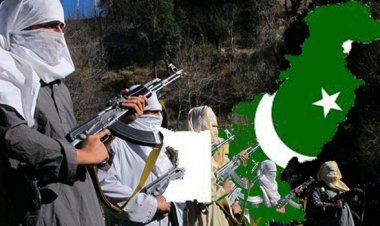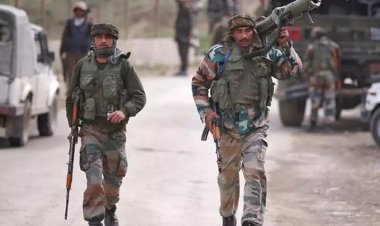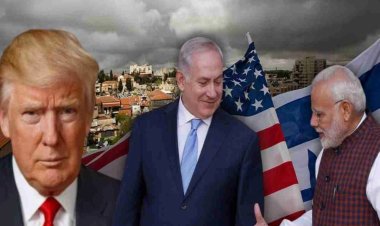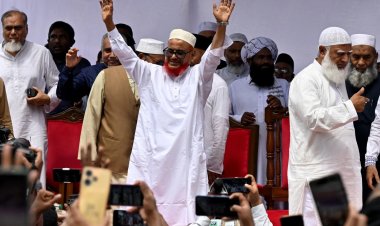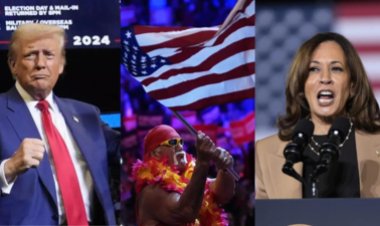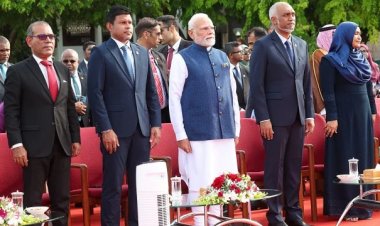Why is Bejing facing the Anti Xi Jinping Protest?
China, a rising global power, adheres to an authoritarian governance structure. The People's Republic of China is governed by a single party, the Communist Party of China. Recently, Beijing has seen a rare demonstration against the current government. In this piece, we will examine China's current political structure and why the People's Republic of China is facing anti-Xi Jinping protests. As an authoritarian state, the Chinese government is intolerant towards any type of protest; hence the government's reaction to this nationwide protest is worth noting.
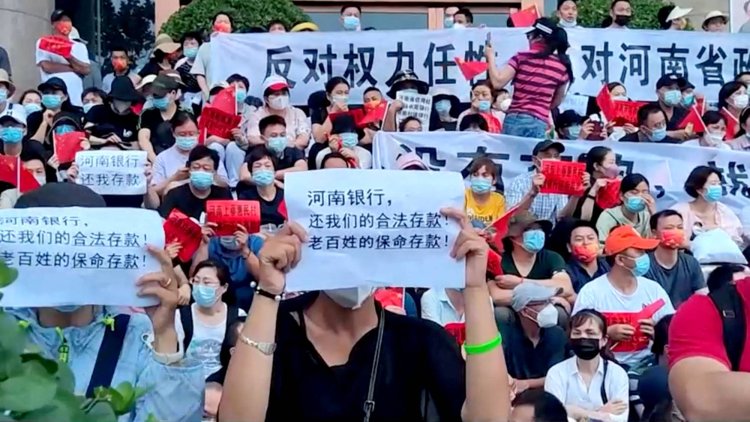
Commentary
By Monika
The People's Republic of China is governed by a single party, the Chinese Communist Party (CCP), which is led by the CCP General Secretary, who serves as China's supreme leader. The Chinese political system is authoritarian, where no freely elected national leaders exist; political opposition is suppressed, the CCP controls all religious activity, dissent is prohibited, and civil rights are restricted. China's authoritarian government suppresses protests that question the government's authority while tolerating protests rooted in localized economic or social unrest. The government has become more oppressive under Xi Jinping's rule.
The recent protest in Beijing got the attention of the world at large. This unrest began on November 24 with an apartment fire in Urumqi, the capital of the Xinjiang region, which killed at least ten people. Most people accused rigorous "zero-COVID" measures of trapping victims inside and keeping fire crews at a safe distance. The next day, local protests erupted, demanding an end to the lockdown that lasted more than three months. Over the weekend of November 26-27, the demonstrations spread to other cities such as Beijing, Shanghai, and Chengdu, catching authorities off guard. Several more protests began as candlelight vigils to remember the victims of the Urumqi fire. As more people joined in, public outrage erupted over three years of hard lockdowns and a contracting economy.
Since November 25, more than 60 similar protests have erupted in 31 cities across China. Protests are common in China, but they usually focus on specific demands such as land, labor, or pay. However, the pursuit of "zero COVID" has triggered unprecedented governmental control of people's lives in the last three years, provoking solidarity across cities and social classes. By implementing rigorous lockdowns, restricting borders, and imposing travel bans, the Zero-Covid plan intends to reduce the number of Covid-19 cases. However, despite the WHO's assessment that its Covid reaction was "unsustainable," China has refused to change most aspects of its strategy. It is still the only major economic power that adheres to the zero-Covid policy. There have been reports of authorities forcing workers to sleep in workplaces to work while isolated. While other countries have moved away from large-scale lockdowns, China has maintained this approach since 2020. For some residents of China, the grievances extend beyond China's "zero-COVID" policy and into the government's grip over practically every aspect of life.
Under Deng Xiaoping's embrace of economic development and openness in the 1980s, China experienced rapid growth and modernization. Such developments emboldened students to advocate for additional reforms, such as free speech, a free press, and an end to government corruption. Protests erupted several times in the years preceding 1989, much like today. Tens of thousands gathered in Tiananmen Square in April 1989 to commemorate Hu and demand change. As the crowds grew, Communist Party officials were divided about how to respond. Some wanted to negotiate with the protesters, while others advocated forceful suppression. The hardliners won the debate, and martial law was established in Beijing in the last two weeks of May. On the 3rd and 4th of June, troops moved towards Tiananmen Square, firing fire, trampling, and detaining demonstrators to retake control of the region. Nobody knows how many people were slain. The Chinese government announced the deaths of 200 people and several dozen security officers at the end of June 1989. Other estimates have ranged from hundreds to thousands. In 2017, newly disclosed UK records revealed that a diplomatic cable sent by the then-British Ambassador to China, Sir Alan Donald, stated that 10,000 people had died. This behavior shows the brutality and intolerance of the Chinese government towards protests and demonstrations. Political protests against the CPC and its leadership are extremely unusual in China, with the country experiencing periodic agitation over various subjects. As a result, criticism of the party and its leadership may result in severe punishments.
Over the last three decades, the Communist Party has worked to suppress individuals and organizations that could jeopardize political stability. Such initiatives have been advanced under Xi, who is running his third five-year term as leader of a governing body stacked with his supporters. The government has imprisoned dissidents, activists, and lawyers and has put pressure on advocacy groups that support causes such as worker and gay rights. Few people in China have the experience or networks to organize meaningful opposition.
Following the 1989 student-led Tiananmen Square protests, sparked by the murder of pro-reform leader Hu Yaobang, the ruling CCP learned lessons from the incident, adopting a collective leadership model that was more open to policy debates in government and society. Unfollowing the de-centralized politics of China forwarded by the Chinese leaders Jiang Zemin and Hu Jintao, Xi Jinping changed the game in 2012 when he ousted Hu Jintao as CCP general secretary and began a re-centralization process that reinforced his position as the party's fundamental leader. Faced with a frustrated population plagued by gaping financial disparities and corruption, Xi borrowed from Mao Zedong's tactical playbook and advised public employees and military leaders to bond with the regular people — all while restricting talks of principles like democracy and free speech.
However, looking at the recent demonstration, many experts and commentaries believe that maybe this time, Chinese people got a voice to express themselves by sidelining the CCP suppression, whereas others remarked that nothing would change in China. To hold on to the widespread protest eruption and to secure Xi’s global reputation on November 28, Chinese authorities relaxed several anti-virus regulations while maintaining their strict "Zero - Covid" strategy. Ma Xingrui, secretary of the Xinjiang Communist Party, urged the region to strengthen security and reduce illegal, violent rejection of Covid-prevention efforts. Some locals may be relieved by the government's recent relaxation of coronavirus regulations, while others remain wary of the government's capacity to follow through. A safe and successful relaxation of "zero-COVID" regulations might help alleviate public outrage, but failure to do so could result in greater upheaval and erode the party's authority. Throughout the year, Chinese people have expressed dissatisfaction with access to medical treatment and issues purchasing food due to delivery service overload. Some people complained about bad conditions in quarantine centers and wondered why those who tested positive had to be kept in these institutions even if they were asymptomatic. Others have expressed their displeasure with the policy of isolating COVID-positive newborns and young toddlers from their parents.
Recent protests indicate that all of these feelings are coming together. These are the first statewide protests in decades under Xi Jinping’s tenure, with participants including university students, small business owners, and ordinary Chinese citizens.
Disclaimer: This paper is the author's individual scholastic contribution and does not necessarily reflect the organization's viewpoint.

